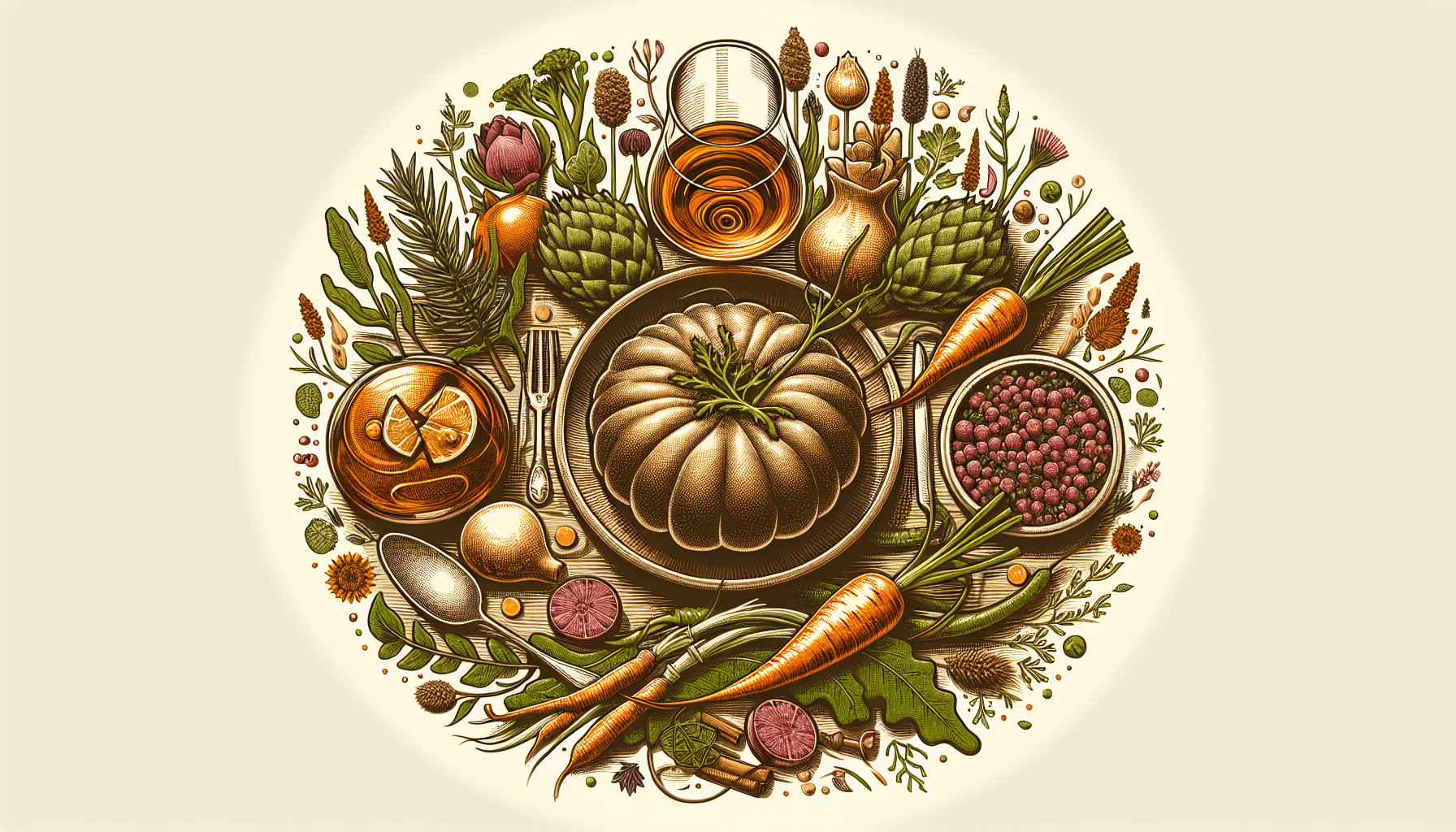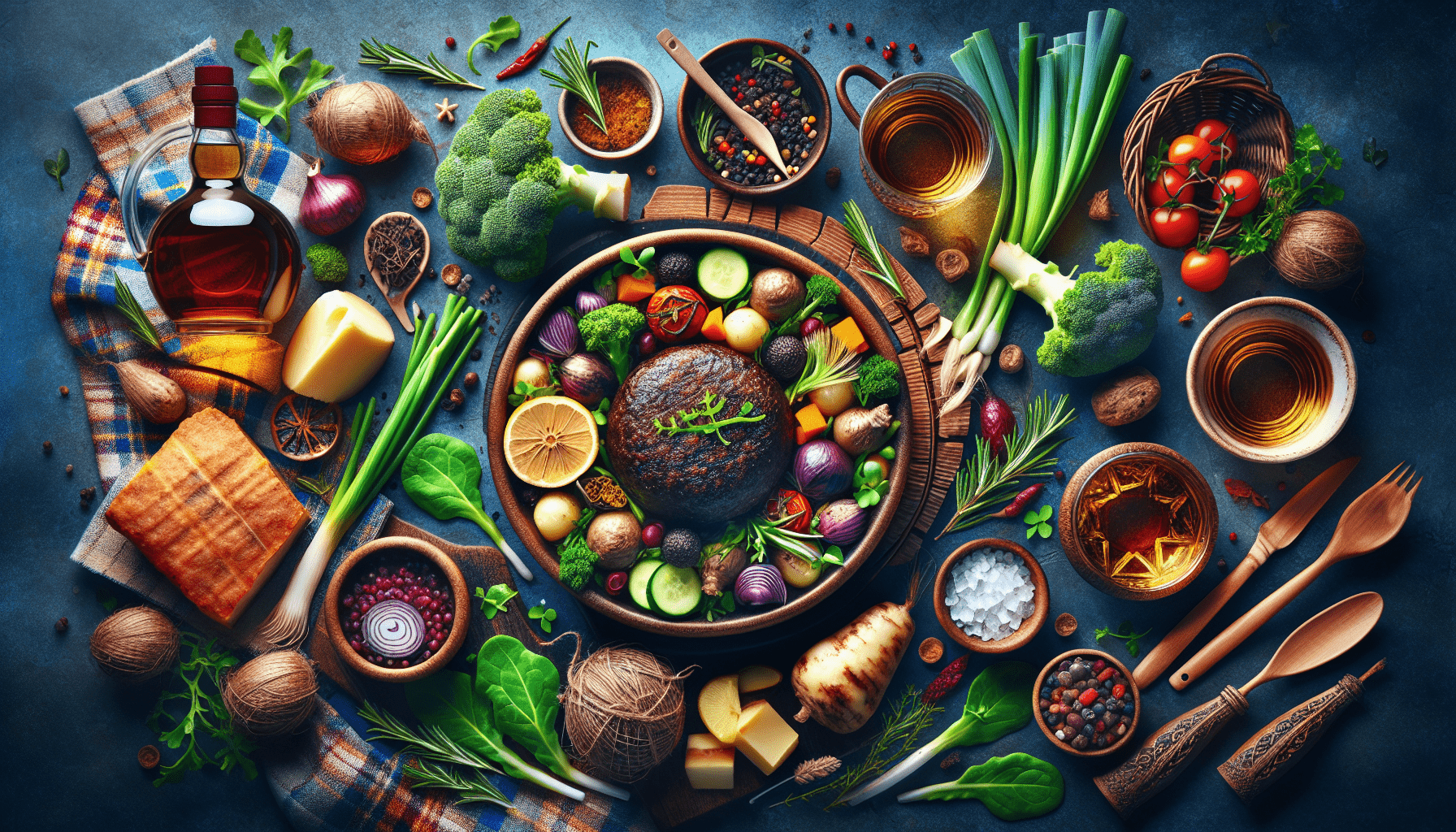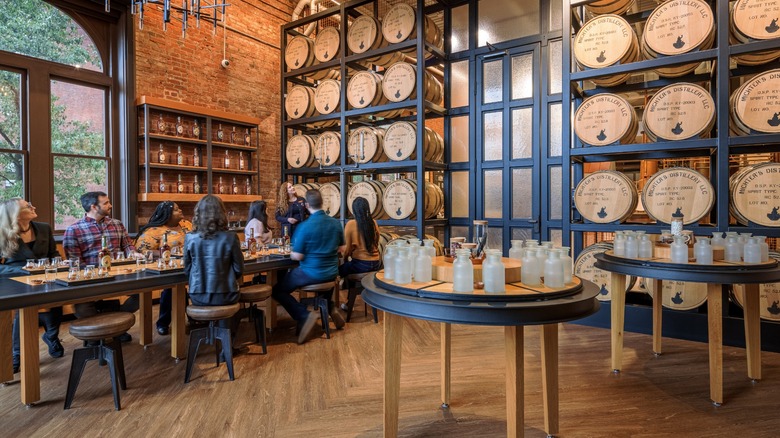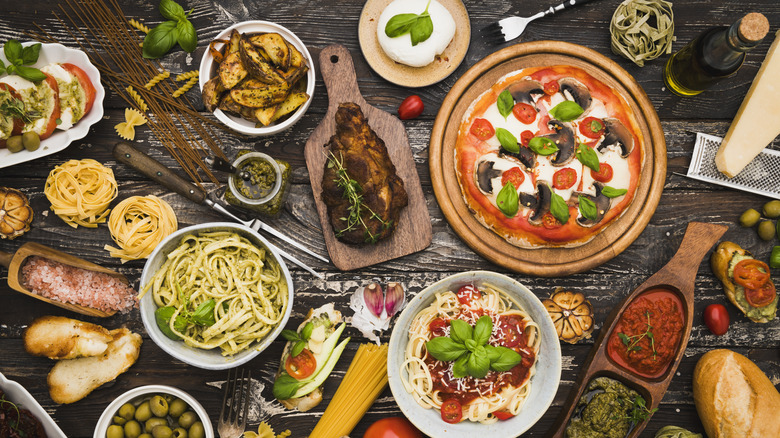BAGAIL 4 Set/6 Set Compression Packing Cubes Travel Accessories Expandable Packing Organizers(Black ClothPattern 4 Set)
$19.99 (as of December 3, 2024 15:58 GMT +00:00 - More infoProduct prices and availability are accurate as of the date/time indicated and are subject to change. Any price and availability information displayed on [relevant Amazon Site(s), as applicable] at the time of purchase will apply to the purchase of this product.)Scotland’s food and drink tourism: A Feast for the Senses
Scotland boasts a rich tapestry of culinary delights, drawing tourists eager to sample everything from artisan gins to freshly caught seafood. This piece delves into how your business can capitalize on these resources to offer authentic, memorable foodie experiences. With insights from experts Sandra Reid, Scott Fraser, and Carina Contini, you’ll learn about the importance of sourcing, storytelling, and collaboration to maximize the potential of Scotland’s vibrant food and drink tourism sector.
Expect a deep dive into best practices, from engaging staff to learning from global trends. You’ll discover how to enhance the visitor experience through sustainable sourcing, promoting local suppliers, and using effective social media strategies. All these elements work together to not only cater to tourists’ tastes but also significantly boost economic impact, aiming to double the current visitor spend on food and drink. Join us as we explore ways to turn Scotland’s culinary riches into a powerhouse for tourism.

The Allure of Scotland’s Food and Drink Tourism
A Diverse Culinary Landscape
When you think of Scotland, what probably comes to mind are picturesque landscapes, historic castles, and the haunting sound of bagpipes. But if you dig a little deeper, you’ll discover that Scotland has a rich and diverse culinary landscape that is just as captivating. From hearty traditional dishes like haggis, neeps, and tatties, to modern gourmet cuisine, Scotland offers a wide variety of gastronomic pleasures. Whether you are a fan of robust flavors or have a more delicate palate, Scotland’s cuisine has something to offer everyone, making it a magnet for food enthusiasts from around the globe.
Artisan Gins and Fresh Seafood
Scotland is not just the land of whiskey; it has also become a haven for artisan gin producers. You’ll find gins that are infused with local botanicals, each sip telling a story of the region it comes from. The burgeoning gin scene is complemented wonderfully by Scotland’s fresh seafood. Think freshly caught salmon, succulent scallops, and mouth-watering langoustines that are sure to leave an indelible mark on your taste buds. The combination of local spirits and fresh seafood offers a multifaceted culinary experience that showcases the best of what Scotland has to offer.
Statistics: Visitor Engagement
There’s a compelling story told by the numbers: 92% of visitors to Scotland engage in some form of food or drink experience such as dining at local restaurants or visiting distilleries. According to recent data, tourists spend about £1 billion annually on food and drink. This level of engagement is a testament to the country’s culinary allure and indicates a significant opportunity for further growth. Whether it’s dining at Michelin-starred establishments or enjoying a simple but perfectly prepared dish at a local pub, Scotland has what it takes to exceed visitor expectations consistently.
Economic Impact of Food and Drink Tourism
Current Visitor Spending
Visitor spending on food and drink in Scotland is nothing short of substantial. Every year, tourists contribute nearly £1 billion to the local economy just through their culinary activities. This spending is distributed across a wide range of experiences, from high-end dining establishments to casual eateries, breweries, distilleries, and street food vendors. Such significant outlay highlights the critical economic role that food and drink tourism plays in Scotland’s overall tourism industry.
Potential for Growth
Scotland’s food and drink sector is poised for even greater heights. With a proper strategy in place, the aim is to double the current visitor spend to £2 billion by 2030. Given the current trends and the positive visitor feedback, this goal appears achievable. Initiatives like promoting farm-to-table dining experiences, culinary tours, and food festivals can further draw in tourists, ensuring they spend more and stay longer.
The Food Tourism Action Plan
A strategic roadmap known as the Food Tourism Action Plan has been set in motion to maximize the potential of food and drink tourism. This plan focuses on a variety of aspects including improving visitor experiences, enhancing collaboration among local businesses, and investing in marketing efforts. It’s a comprehensive approach aimed at fostering both the quality and reputation of Scotland’s culinary offerings, ensuring that every visitor leaves with a satisfied palate and a yearning to return.
Key Figures in Scotland’s Culinary Scene
Sandra Reid: Leisure and Heritage Consultant
Sandra Reid is a pivotal figure in Scotland’s food and drink tourism landscape. With 14 years of consultancy experience in leisure, heritage, and visitor attraction catering and retail, Sandra’s expertise has been invaluable in enhancing the culinary offerings at numerous establishments. Her insights into improving the visitor experience and boosting visitor spending have been instrumental in the sector’s growth.
Scott Fraser: Culinary Expert with Global Experience
With a rich background that includes an MSc in Gastronomy, Scott Fraser is a culinary expert whose experience spans across the globe. From fine dining establishments to food manufacturing for the UK retail market, Scott’s insights are unparalleled. His knowledge helps elevate Scotland’s culinary scene by integrating international best practices while maintaining a uniquely Scottish flavor.
Carina Contini: Promoter of Local Produce and Sustainability
Carina Contini, the director of award-winning Edinburgh restaurants, is a passionate advocate for local produce and sustainability. Sourcing from over 70 Scottish artisan suppliers, Carina ensures that her restaurants offer dishes that are both delicious and environmentally responsible. Her approach to integrating local produce into the menu not only boosts the local economy but also provides diners with an authentic Scottish culinary experience.
Importance of Authenticity and Diversity
Memorable Traveler Experiences
Authenticity and diversity in Scotland’s food and drink offerings create memorable traveler experiences. Visitors are increasingly looking for unique and authentic experiences that provide them with a deeper connection to the places they visit. By emphasizing local ingredients and traditional recipes, Scotland ensures that each meal is not just food but a story waiting to be told.
Local Produce and Storytelling
Using local produce is not just a trend; it’s a way of telling Scotland’s story. Whether it’s salmon from the pristine waters of the Highlands or vegetables grown in the fertile soils of the Lowlands, the provenance of food adds a rich layer to the overall dining experience. Guests are more likely to be fascinated by a dish when they know where its ingredients come from and the effort that goes into producing them.
Exceeding Visitor Expectations
Research indicates that visitors often find their culinary experiences in Scotland exceed their expectations. This suggests that there is still untapped potential in food and drink tourism that could be leveraged further. By continuously innovating and maintaining high standards, Scotland can ensure it remains a top destination for global food enthusiasts.

Business Strategies for Enhancing Visitor Experiences
Engaging and Training Staff
One of the key components of enhancing visitor experiences is having well-trained and engaged staff. When your team is knowledgeable and passionate about the food and drinks you offer, it translates into a more engaging experience for your guests. Staff training should focus on the origins of ingredients, the stories behind the dishes, and exceptional customer service.
Telling the Story of Food
Every dish and drink has a story, and sharing these narratives can significantly enrich the visitor experience. Whether it’s about the local farmer who provides the vegetables or the historical significance of a traditional dish, storytelling helps in creating a deeper connection between the visitor and what they consume.
Collaborating with Local Businesses
Collaboration is a powerful tool that can help elevate the entire culinary landscape. By partnering with local farms, breweries, distilleries, and other businesses, you not only enhance your offerings but also contribute to the local economy. These collaborations can take many forms, from sourcing ingredients to joint marketing efforts and collaborative events.
Interactive Tutorials and Expert Insights
Best Practices and Global Trends
Staying abreast of global trends and best practices is crucial for continuous improvement. Interactive tutorials featuring expert insights can provide valuable information on a range of topics such as sustainable practices, innovative culinary techniques, and effective marketing strategies.
Practical Advice for Growth
Interactive tutorials can also offer practical advice tailored to various aspects of running a successful food and drink business. From efficient kitchen management to enhancing customer engagement, these sessions can provide actionable steps that businesses can implement immediately.
Case Studies and Real-world Examples
Learning from real-world examples and case studies can provide a sense of what has worked and what hasn’t. These examples offer a roadmap for businesses looking to replicate successful strategies or avoid common pitfalls. Case studies from both within Scotland and from similar markets globally can provide a well-rounded perspective.
Leveraging Social Media and Online Engagement
Visual Storytelling on Instagram
Social media platforms like Instagram offer a fantastic opportunity for visual storytelling. High-quality images and videos of your dishes, behind-the-scenes content, and stories of local suppliers can captivate audiences and draw them into your culinary world. Consistent engagement on these platforms helps in building a loyal customer base.
Engaging Customers through Blogs and Reviews
Blogs and reviews are an excellent way to engage with your customers on a more personal level. Sharing stories, recipes, and insider tips through blog posts can enhance the visitor experience even before they set foot in your venue. Responding to reviews shows that you value customer feedback and are committed to continuous improvement.
Online Collaboration and Community Building
Online platforms can also be used to build a community around your brand. Collaborating with influencers, partnering with other businesses for online events, and engaging with your audience through social media can help in creating a strong online presence and community.
Case Studies of Successful Food Tourism
The Three Chimneys: A Model of Local Engagement
The Three Chimneys on the Isle of Skye is a shining example of how local engagement can elevate a dining experience. Renowned for its use of local ingredients and its commitment to quality, The Three Chimneys offers a menu that is deeply rooted in the local landscape. This approach not only provides diners with an authentic experience but also supports the local economy.
Pop-up Restaurants and Seasonal Menus
Pop-up restaurants and seasonal menus offer exciting opportunities to showcase local produce in unique ways. In places like Inverness, pop-up restaurants focusing on locally sourced and seasonal products have become very popular. These temporary dining experiences create a sense of urgency and excitement, making them a hit with both locals and tourists.
International Examples: San Sebastian and Singapore
Looking abroad, San Sebastian in Spain and Singapore offer valuable lessons in food tourism. San Sebastian is known for its pintxos bars, where simple but perfectly executed dishes draw food enthusiasts from around the world. Singapore, on the other hand, has successfully marketed its diverse culinary heritage, from street food to fine dining, making it a key destination for culinary tourism.
Community and Collaboration in Food Tourism
Using Menus to Promote Local Suppliers
Utilizing menus to highlight local suppliers can enhance the dining experience while also promoting the community. Mentioning the names of farms, fisheries, and other local producers on your menu tells your guests that you value quality and support local businesses.
Dynamic Community Maps
Dynamic community maps can showcase local suppliers and partners, providing a visual representation of the network that supports your establishment. Updated regularly, these maps can serve as a guide for visitors who wish to explore the local culinary landscape further.
Examples of Local Collaborative Efforts
Local collaborative efforts, such as farmers’ markets, food festivals, and joint marketing campaigns, can benefit all parties involved. When businesses come together to promote local produce and culinary experiences, it creates a stronger, more vibrant food tourism sector.
Conclusion
Recap of Key Points
Scotland’s food and drink tourism offers a diverse and compelling landscape that draws visitors from all over the world. With significant annual visitor spending and a promising potential for growth, the economic impact of this sector is substantial. Key figures like Sandra Reid, Scott Fraser, and Carina Contini have been pivotal in shaping Scotland’s culinary scene, advocating for local produce and sustainability.
Encouragement for Continued Engagement
The importance of authenticity and diversity in creating memorable traveler experiences cannot be overstated. Engaging and training staff, telling the story of your food, and collaborating with local businesses are effective strategies for enhancing visitor experiences. Interactive tutorials, leveraging social media, and studying successful case examples provide a roadmap for continuous improvement.
Closing Remarks from Hosts
Whether you are a visitor seeking gastronomic delights or a business looking to enhance your offerings, Scotland’s food and drink tourism has something for everyone. The collaborative spirit and commitment to quality and sustainability ensure that Scotland will remain a top destination for culinary enthusiasts worldwide. So come explore, taste, and enjoy all that Scotland has to offer!
By following these guidelines, you can harness the hidden potential in Scotland’s food and drink tourism, creating experiences that not only meet but exceed expectations.






